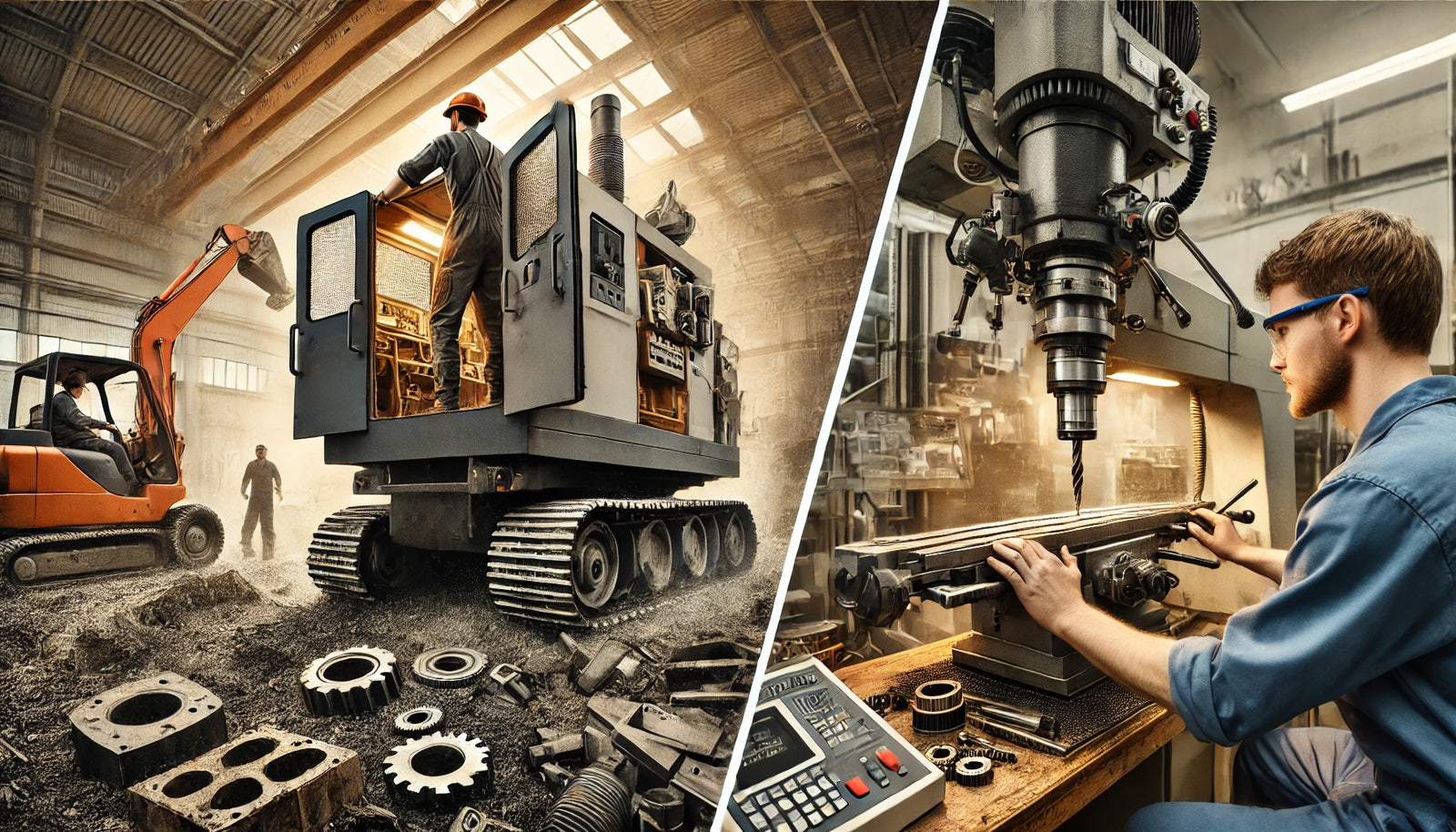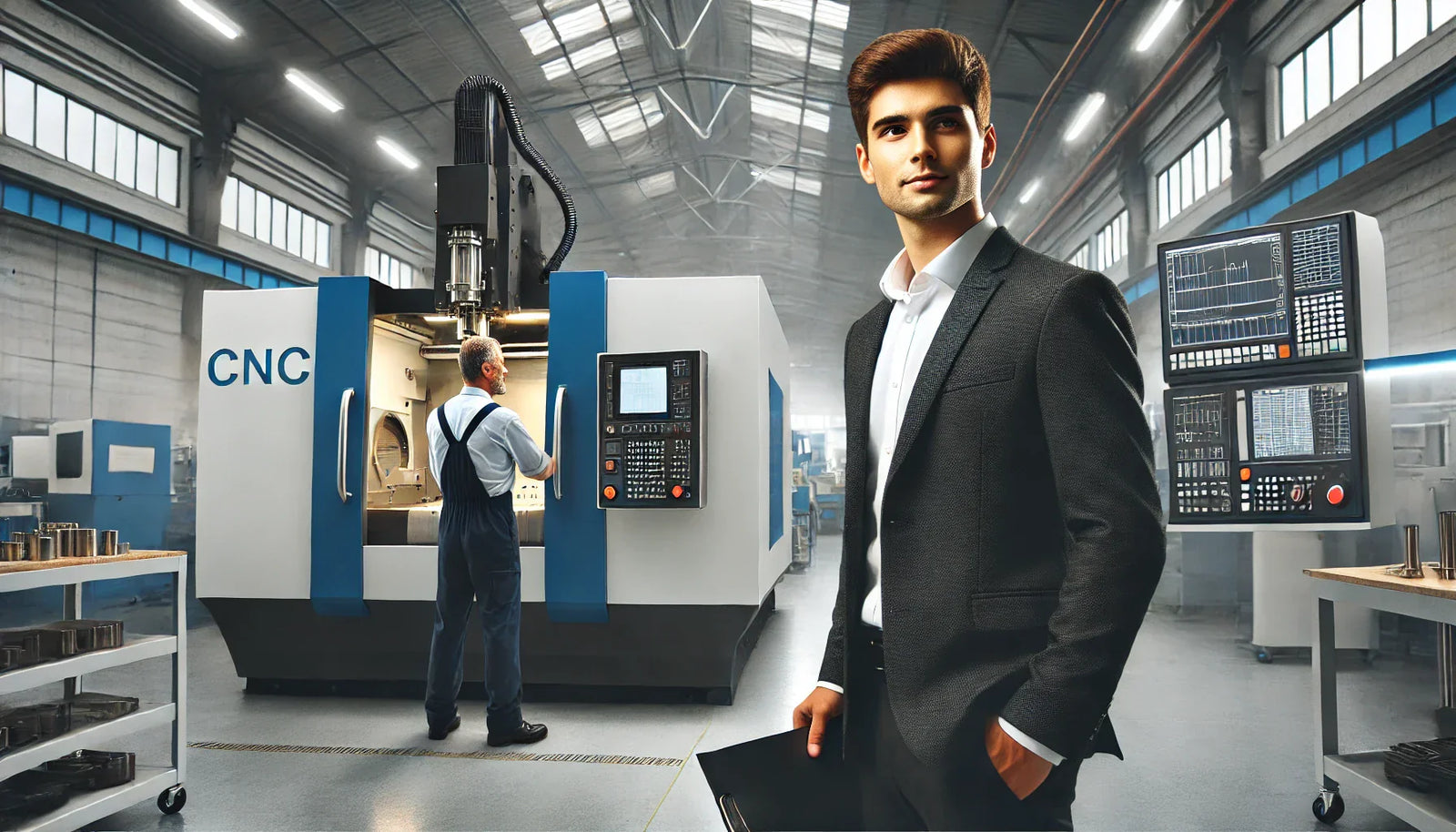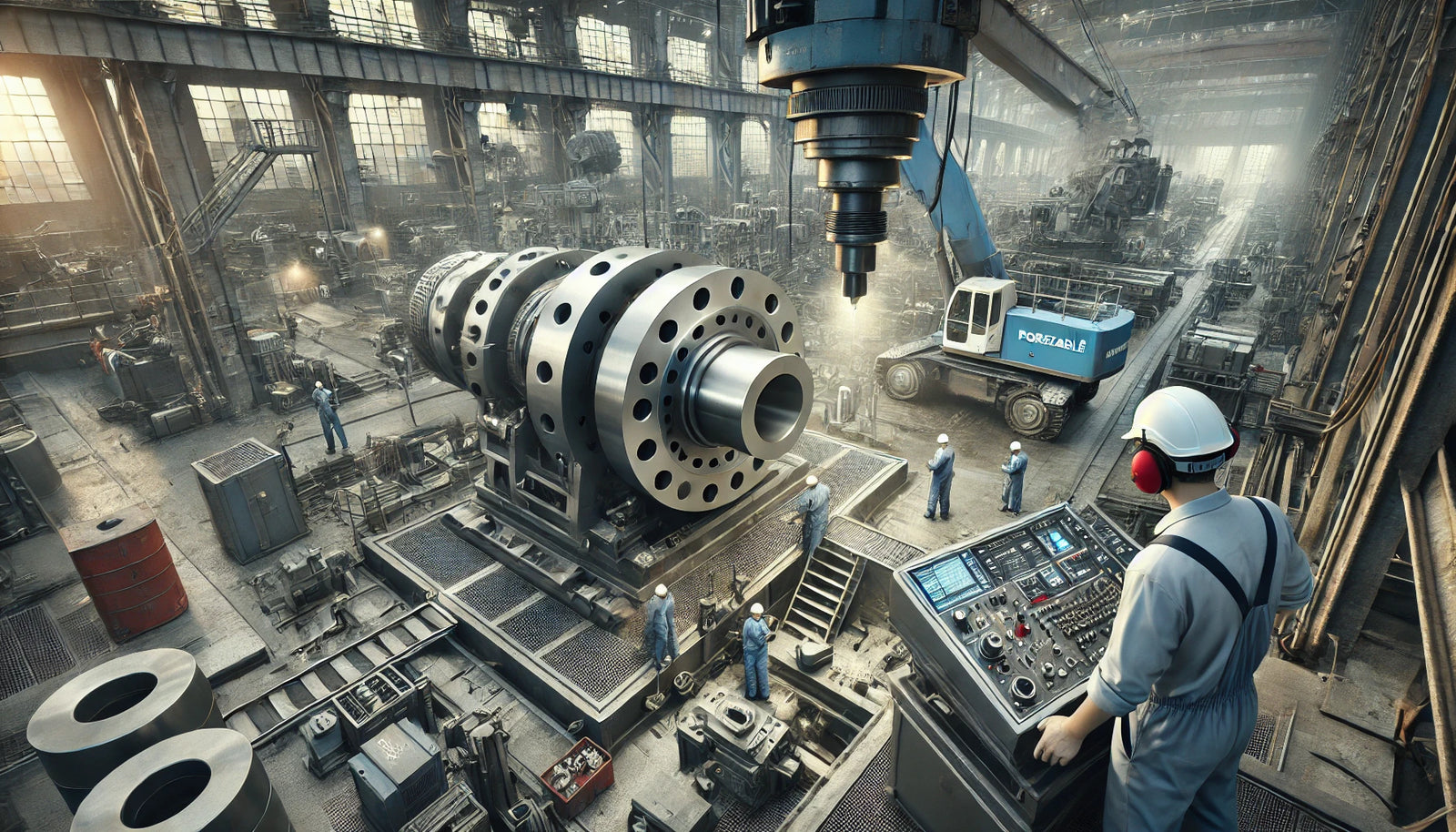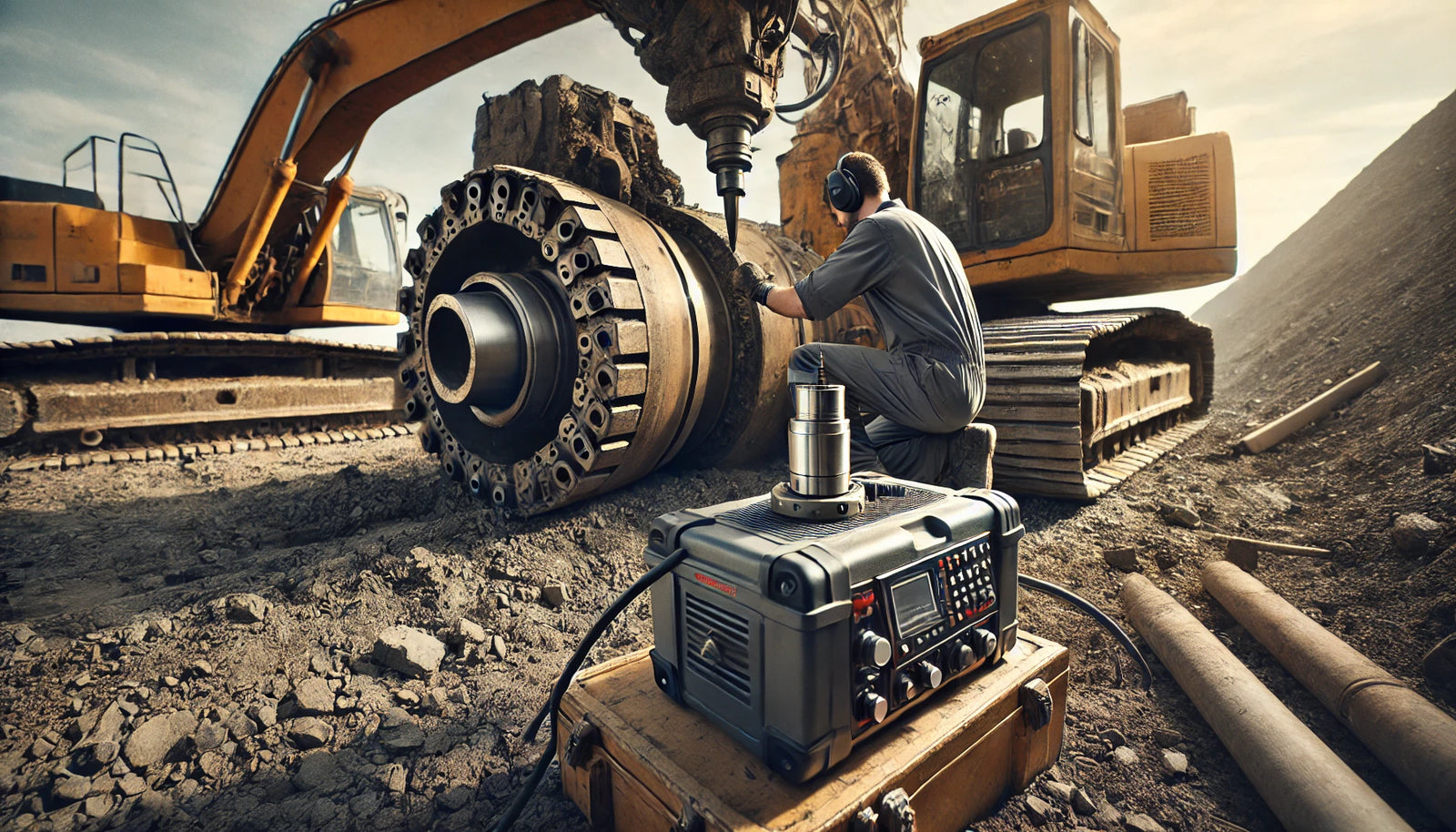Milling is an essential process in many industries, from construction and manufacturing to aerospace and mining. It's the process of removing material from a workpiece to create precise shapes, surfaces, or features. When choosing between portable milling machines and traditional, fixed machines, the decision often comes down to the specific needs of your project. Both types of machines have their advantages, but which one is right for you? Let’s compare these two options to help you make an informed choice.
What is a Portable Milling Machine?
A portable milling machine is a versatile tool designed for on-site machining tasks. These machines are compact, easy to transport, and can be set up directly on or near the workpiece. They are typically used for in-situ machining—meaning the equipment being worked on doesn't need to be dismantled or moved to a machine shop.
Portable milling machines are ideal for repairing or modifying large structures like bridges, ship decks, wind turbines, or industrial equipment where moving the workpiece is impractical or impossible. They offer a high level of precision and flexibility, making them suitable for a range of field applications.
Traditional (Fixed) Milling Machines
Traditional milling machines are large, stationary tools found in machine shops and industrial environments. These machines are known for their power, precision, and ability to handle complex machining tasks. With a solid foundation and an array of attachments, they are used to machine a wide variety of materials, including metals, plastics, and composites.
Fixed milling machines are often used in manufacturing environments where repeatability and tight tolerances are critical. These machines can produce intricate parts with high accuracy, making them the go-to solution for many production facilities.
Key Differences Between Portable and Traditional Milling Machines
While both types of machines are used for similar tasks, they offer distinct advantages depending on the situation. Let’s explore the main differences.
1. Mobility and Setup Time
-
Portable Milling Machines: The most significant advantage of portable milling machines is their mobility. These machines are designed to be lightweight and compact, making them easy to transport to various job sites. They can be set up quickly, even in challenging or confined spaces, which saves both time and labor. In industries like shipbuilding, mining, or construction, where large equipment needs to be repaired on-site, portable machines excel.
-
Traditional Milling Machines: In contrast, traditional machines are fixed to a specific location. While this provides stability and the ability to handle larger workpieces, it limits flexibility. Moving large parts to a machine shop can result in lengthy downtime and high transportation costs, making traditional machines less ideal for repairs in remote or difficult-to-access locations.
2. Precision and Capabilities
-
Portable Milling Machines: Portable machines are highly precise but may have some limitations in terms of the size of the workpieces they can handle compared to their fixed counterparts. However, advancements in portable milling technology have allowed these machines to perform increasingly complex tasks, offering a level of precision that is more than adequate for most on-site repairs and modifications.
-
Traditional Milling Machines: Fixed milling machines are designed for high precision and can handle large, complex projects that require tight tolerances. They are perfect for machining intricate components and offer extensive tooling options, including automatic tool changers and high-speed spindles, making them the ideal choice for high-precision manufacturing tasks.
3. Versatility and Range of Applications
-
Portable Milling Machines: Portability brings versatility. These machines can be used across multiple industries and for various applications, from milling and cutting to drilling and slotting. They’re especially valuable in industries where large components are part of the job, such as heavy equipment, offshore platforms, or pipelines. These machines can also perform repairs on-site, reducing downtime and eliminating the need to dismantle equipment.
-
Traditional Milling Machines: Traditional milling machines are also versatile, but their fixed nature confines them to the shop floor. They can accommodate a broader range of workpieces and materials due to their larger size and array of tools, but they are not practical for projects that require on-site machining. Their versatility shines in production settings where a large variety of parts need to be machined repeatedly with high precision.
4. Cost and Return on Investment (ROI)
-
Portable Milling Machines: While portable milling machines may have a higher initial cost due to their specialized design, they can save companies significant amounts of money in the long run. The ability to perform repairs and modifications on-site means less downtime, fewer transportation costs, and faster project completion. This makes them a great investment for industries where heavy machinery and large structures require regular maintenance.
-
Traditional Milling Machines: Fixed machines may have lower initial costs and are widely available in different sizes and capabilities, but they can result in higher operational costs for certain projects. Transporting large parts to the machine shop, along with the downtime involved, can quickly add up. However, for high-volume production or parts manufacturing, traditional machines deliver an excellent ROI due to their precision and efficiency in producing multiple components.
When Should You Choose a Portable Milling Machine?
-
On-Site Repairs or Modifications: If your project involves repairing or modifying large equipment or structures that cannot easily be moved, a portable milling machine is the best choice. This applies to industries like oil and gas, construction, shipbuilding, and mining.
-
Remote or Confined Locations: If your work takes place in remote or difficult-to-access locations, such as offshore platforms, pipelines, or large industrial facilities, the portability of a milling machine can save time and resources.
-
Short Downtime Windows: For companies that cannot afford long downtimes, portable milling machines allow for repairs and modifications to be completed on-site, reducing the need to disassemble equipment or wait for transport to a machine shop.
When Should You Choose a Traditional Milling Machine?
-
Precision Manufacturing: For projects that require high levels of precision, repeatability, and complexity, traditional milling machines are the best option. Their ability to handle intricate machining tasks with tight tolerances makes them essential for industries like aerospace, automotive, and high-tech manufacturing.
-
Large-Scale Production: Traditional milling machines excel in a production environment where high-volume manufacturing is required. If your project involves producing a large number of components to exact specifications, a fixed milling machine is likely the best choice.
Conclusion
Both portable and traditional milling machines offer distinct advantages depending on the project at hand. Portable milling machines are ideal for on-site repairs, reducing downtime, and performing versatile tasks in remote locations. On the other hand, traditional milling machines provide unmatched precision, power, and tooling options for manufacturing environments that demand high accuracy and efficiency.
Choosing between the two depends on the specific requirements of your project—whether mobility, flexibility, and rapid response are key, or if high-precision manufacturing and repeatability are the priority. Understanding the strengths and limitations of each type of machine will help you make the best choice for your next project.





